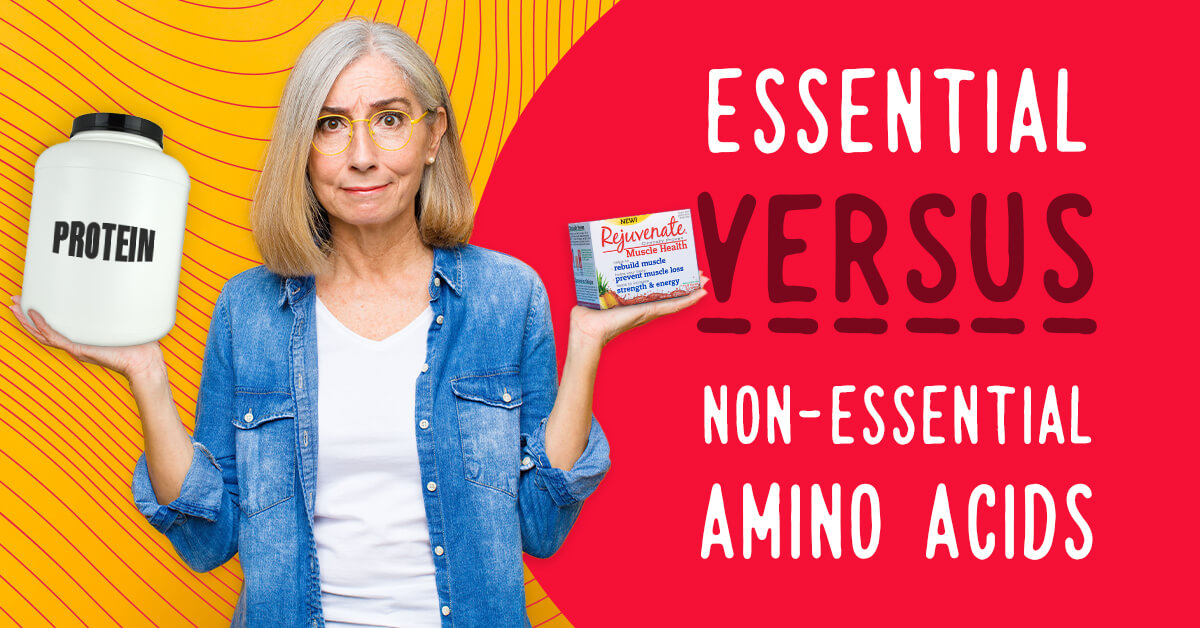Essential vs. Non-Essential Amino Acids (Health Guide)

Amino acids are essential to our body’s health and wellness but they are not all considered ESSENTIAL.
As you may know, amino acids combine to build protein which we all need (people over 40 need a little more of it). Those of us over 40 need to maintain a healthy diet because we don’t process protein as well, potentially leading to sarcopenia (age-related muscle loss).
So what are essential and non-essential amino acids and why are they important? For more detailed information check out this health guide to the 9 best foods with essential amino acids. Let us help you learn how to lead a healthier life, with amino acids as your building blocks of strength.
What are amino acids? <
Amino acids are organic compounds that work to synthesize hormones and neurotransmitters. It’s important to get enough amino acids to maintain proper health as not getting enough can lead to Amino Acid deficiency.
Of the 20 amino acids that are needed to be healthy, 9 are Essential Amino Acids (EAAs). The 9 essential amino acids are histidine, isoleucine, leucine, lysine, methionine, phenylalanine, threonine, tryptophan, and valine, all of which must be obtained through diet alone.
The remaining 11 (Non-essential) are alanine, asparagine, arginine, glutamine, tyrosine, cysteine, glycine, proline, serine, aspartate, and ornithine and are created by your body.
What is the difference between essential and non-essential?
Essential amino acids (also called indispensable) are necessary for optimum health and are only available through food; because your body doesn’t store these building blocks of protein, we need to be conscious of consuming them in our daily diet.
The name is a little misleading (we still need them to be healthy), but non-essential amino acids are made by your body, so no need to worry about getting them in other ways!
Why do I need them?
Essential and non-essential amino acids are categorized by the body’s ability to synthesize them. They have different benefits and functions in the body:
-
Essential amino acids help to build and repair muscle tissues and form precursor molecules for the formation of neurotransmitters in the brain. /p>
-
Non-essential amino acids remove toxins and are integral in the synthesis of RBC and WBC, they also promote brain function.
What’s the easiest way to get them?
The best way to focus on getting enough non-essential amino acids is to maintain a healthy diet rich in protein (46 grams daily for women and 56 grams for men) or eat these 7 food items that contain amino acids. Many supplements can help you to get enough protein such as a muscle builder shake or muscle health supplements.
When focusing on your health with an active lifestyle and a varied diet, don’t forget amino acids! Being aware of these important cell-building compounds will enable you to live stronger, longer.



